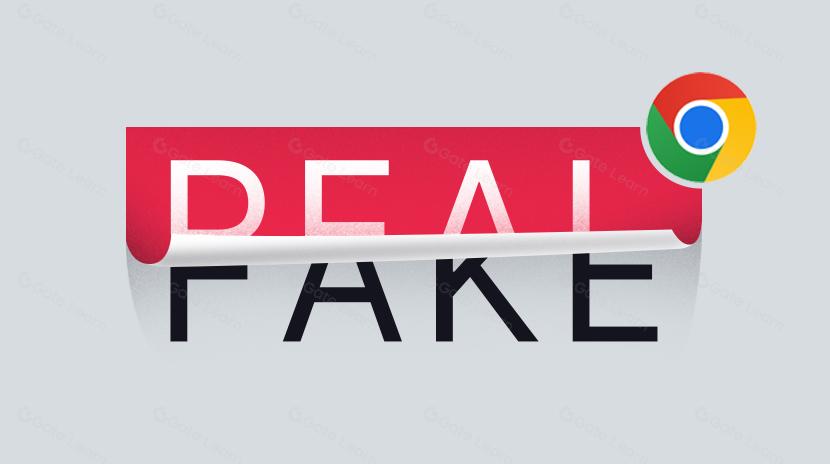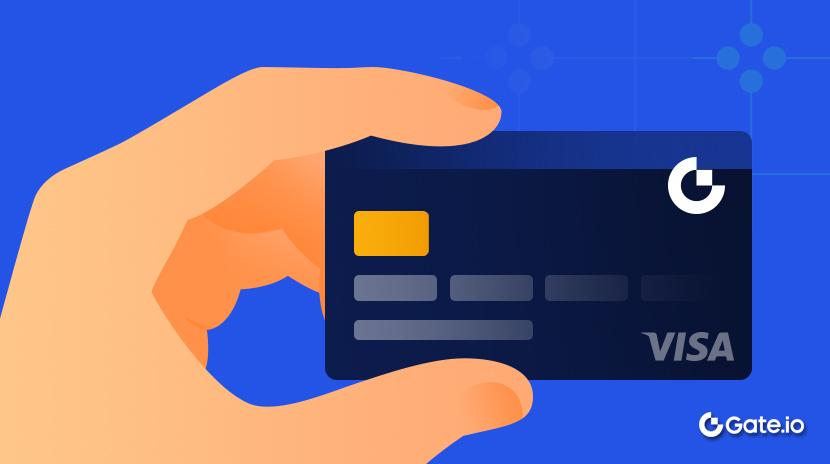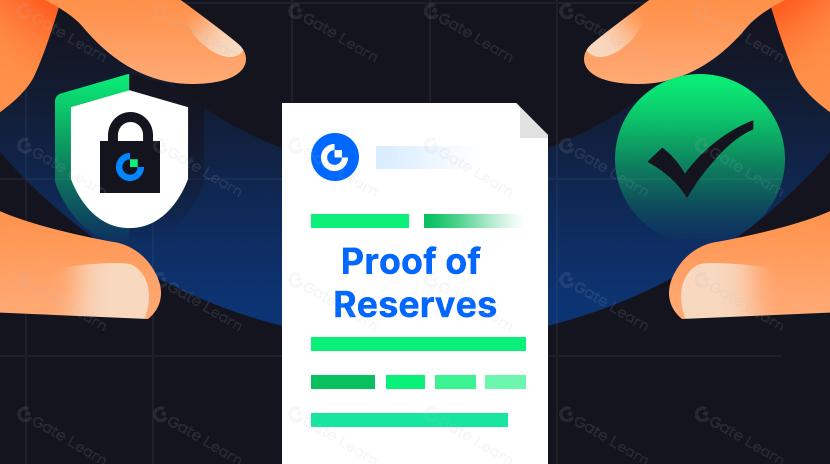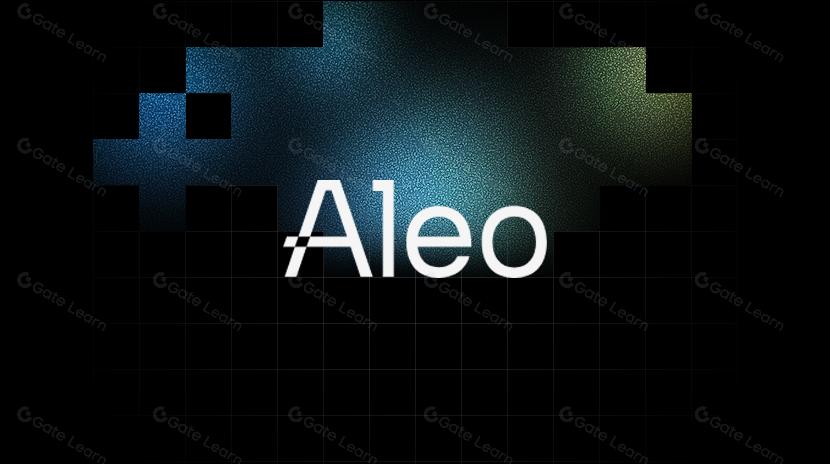Concordium Explained: A Layer-1 Blockchain Built for Regulation
The rise of blockchain has opened new frontiers for innovation, but it’s also exposed a fundamental tension: how do you balance privacy with accountability? Most decentralized networks have leaned hard into anonymity, which creates friction with regulators and limits adoption by institutions. The lack of identity infrastructure has made it difficult for serious financial players to engage in Web3 without legal risk. As the ecosystem matures, it’s clear that the next phase of blockchain must embrace compliance and decentralization without compromising the principles that made the space revolutionary in the first place.
Concordium was built to address this challenge. It’s a public, permissionless Layer 1 blockchain with a built-in identity layer allowing users to interact privately while remaining accountable when legally required. With features like stable fees, instant finality, zero-knowledge proofs, and energy-efficient consensus, Concordium offers developers and businesses the tools they need to innovate safely, while giving regulators the transparency they demand.
What is Concordium?

Concordium is a public, permissionless Layer 1 blockchain built with compliance at its core. It’s designed to support real-world applications by embedding identity verification directly into the protocol—something no other major chain has done. Every wallet on Concordium is tied to a verified real-world identity via external identity providers, but users still maintain transactional privacy through zero-knowledge proofs. This architecture makes Concordium uniquely positioned to serve both individuals and institutions, creating a secure and trust-based foundation for everything from regulated DeFi to enterprise-grade apps.
Concordium’s mission is to build a blockchain infrastructure where privacy, accountability, and usability coexist. It envisions a future where decentralized systems can scale globally without sacrificing regulatory compliance or user sovereignty.
How Concordium Works

Concordium combines advanced cryptography with protocol-level identity verification to deliver a fast, private, and regulatory-ready blockchain. It achieves this through a layered architecture that separates roles while maintaining a seamless user experience.
Identity Layer
Every Concordium user must verify their identity through an external identity provider. While the blockchain keeps user actions private using zero-knowledge proofs, identity can be revealed through legal channels when necessary. This design enables businesses and developers to build apps that are both privacy-preserving and compliant.
Dual Consensus Mechanism
Concordium uses a hybrid consensus model combining a Nakamoto-style Proof-of-Stake (PoS) mechanism for block production and a Byzantine Fault Tolerant (BFT) finality layer. This ensures quick and irreversible finalization of transactions, usually within seconds, making it ideal for enterprise use cases and applications where transaction certainty is critical.
WASM-Based Smart Contracts
Smart contracts on Concordium run in a WebAssembly (WASM) virtual machine, allowing developers to build using languages like Rust. This setup improves security, performance, and cross-platform compatibility. Concordium also provides developer tools and SDKs to simplify contract deployment, testing, and integration into real-world applications.
Stable Fees
Concordium pegs transaction fees to the Euro, shielding developers and users from token price volatility. This makes cost planning predictable, especially valuable for enterprises and large-scale dApp developers. CCD, the native token, is used to pay fees, but the fee value remains stable in fiat terms.
Open Participation
The network is fully decentralized. Anyone taking more than 14,000 CCD can become a validator (“baker”), and those with a smaller amount can delegate to existing validators. Finalizers—those who stake even more—help ensure BFT-level finality. This setup ensures both openness and strong network security.
Key Features of Concordium
Protocol-Level Identity Layer
Concordium stands out for integrating identity directly into the blockchain’s protocol. Every wallet must be tied to a real-world identity verified by a third-party provider. While user activity remains private thanks to zero-knowledge proofs, legal processes can reveal identities when required. This approach allows decentralized applications and financial platforms to meet KYC/AML regulations without sacrificing user privacy.
Dual-Layer Consensus for Finality and Speed
Concordium’s hybrid consensus model combines Proof-of-Stake (PoS) with a Byzantine Fault-Tolerant (BFT) layer. This means transactions are confirmed quickly and finalized within seconds, with no risk of rollback. The system ensures both speed and security, making it ideal for real-world use cases like payments, settlements, and enterprise dApps.
Stable and Predictable Fees
Fees on Concordium are pegged to the Euro, not the token price. This gives developers and businesses cost predictability regardless of CCD’s market volatility. Whether you’re deploying smart contracts or running regular transactions, the pricing structure remains stable, allowing for accurate budgeting and more reliable user experience.
Smart Contracts with WASM Support
Concordium uses a WebAssembly-based execution layer, allowing developers to write smart contracts in Rust and other WASM-compatible languages. It’s a secure and efficient environment that brings flexibility without compromising performance. Combined with developer SDKs and open-source tools, Concordium is developer-friendly while maintaining enterprise-grade robustness.
Environmentally Efficient
As a Proof-of-Stake network built with Rust-based smart contracts, Concordium is designed to be energy efficient. Running a validator node consumes as little energy annually as charging an electric car once, significantly lower than Proof-of-Work blockchains. This focus on sustainability makes it a future-proof option in the era of green finance and responsible tech.
Regulated DeFi and Enterprise-Ready Design
Concordium isn’t just another public chain—it’s tailored for business. The platform launched the world’s first Regulated DeFi Lab, supporting compliant dApp development. It’s suited for institutions requiring strong audit trails, compliance support, and privacy-preserving infrastructure wrapped into a blockchain ecosystem.
The Concordium Ecosystem
The Concordium ecosystem is built to solve one of blockchain’s biggest challenges: bridging the gap between regulatory compliance and decentralized freedom. At its core is a privacy-first identity layer, surrounded by a growing suite of tools and infrastructure designed for scalability, trust, and real-world utility.
Protocol-Level ID Verification

Identity verification on Concordium is embedded at the protocol level, meaning it is a core part of the blockchain’s operation. Users undergo an off-chain Know Your Customer (KYC) process with trusted identity providers, and only a cryptographic representation of their identity is stored on the blockchain. This allows regulators to access identities when necessary, such as for anti-money laundering (AML) checks, without compromising the network’s decentralization or user privacy.
Third-party providers facilitate the process, ensuring that sensitive personal data is not stored on-chain and reducing the risk of data breaches. For instance, a financial institution using Concordium can comply with AML regulations by requesting identity disclosure when legally required, while users retain control over their data. This protocol-level integration of ID verification is a key differentiator, enabling Concordium to meet the stringent requirements of regulated industries, such as lowering the cost and complexity of multiple third-party KYC/KYB providers and facilitating global compliance.
Identity-Centric Infrastructure
Concordium’s blockchain is centered on an identity layer that integrates verification directly into the protocol, distinguishing it from anonymous blockchains. Every wallet must be linked to a verified real-world identity through third-party providers, ensuring accountability while maintaining user privacy. Only encrypted credentials are stored on the blockchain, protected by Swiss law, which adds an extra layer of security and trust. This setup is particularly appealing for finance and supply chain industries, where identity is crucial for trust and compliance.
The identity-centric approach ensures that participants are identifiable if regulations require it, addressing a key barrier for blockchain adoption in regulated sectors. This infrastructure enhances security and simplifies compliance for issuers of stablecoins and money market funds by reducing the need for multiple third-party providers, lowering costs and complexity.
Zero-Knowledge Proofs

Zero-knowledge proofs (ZKPs) are a fundamental technology in Concordium’s ecosystem, enabling privacy-preserving compliance. ZKPs allow users to prove specific facts about themselves or their transactions without revealing any underlying personal data. Concordium uses ZKPs directly in wallets, supporting self-sovereign identity where users control their own data.
ZKP technology supports various proof mechanisms, such as equality, set membership, and range proofs, making it versatile for applications like age verification or jurisdictional compliance. This is particularly important for industries like gaming or finance, where privacy and compliance must coexist. Concordium’s implementation of ZKPs, including lightweight proofs that can be generated from cell phones, ensures accessibility and efficiency. It reduces compliance costs by streamlining geofencing and KYC/AML checks without exposing excessive personal data.
CCD Token Economy

The CCD token is the native cryptocurrency of Concordium, powering the ecosystem’s operations. As of April 2025, it has a total supply of approximately 13.8 billion tokens, with 11.4 billion in circulation. CCD is used for transaction fees, which are pegged to fiat currencies like the euro for stability and predictability, making it easier for businesses to budget. Additionally, CCD is essential for staking, where users can run nodes (bakers or finalizers) to secure the network and earn rewards. It also serves as collateral in DeFi applications and supports governance, allowing CCD holders to participate in network decisions. CCD is traded on Gate.com exchanges with a market cap of about $51 million. The token economy incentivizes participation and provides a stable fee structure, making Concordium attractive for enterprises and users.
Layered Protocol Architecture

Concordium’s blockchain is structured into distinct layers, each optimized for specific functions, ensuring efficiency, scalability, and security:
- Consensus Layer: Utilizes a Proof-of-Stake (PoS) mechanism called ConcordiumBFT, based on HotStuff. It achieves 2,000 transactions per second (TPS), is fork-free, and has a finality time of 2-4 seconds. It can tolerate up to 1/3 of nodes being malicious or faulty, ensuring network security. This layer is crucial for maintaining consensus and preventing forks, with a block time of 2.5 seconds and transaction fees at $0.01.
- Execution Layer: Handles deterministic and parallel execution of smart contracts written in WebAssembly (WASM), supporting multi-language development and enhancing efficiency. This layer provides a developer-friendly environment for building complex dApps, with performance metrics supporting up to 2,000 TPS.Efficient
- Network Layer: Ensures efficient peer-to-peer communication, optimized for high-speed transactions and data relay. Nodes autonomously maintain data integrity, contributing to the network’s reliability.
- Identity Layer: Manages privacy-first ID attribute verification without exposing personal details. It supports decentralized, secure ID management, protected by Swiss law, and allows for multi-signature accounts, useful for businesses, enhancing compliance and security.
Tools for Developers
Concordium provides a range of tools and resources for developers to build on its blockchain, catering to beginners and experienced coders. The Execution Layer supports smart contracts via WebAssembly (WASM), allowing for multi-language development and parallel execution, which enhances efficiency. It also supports Web3ID for issuing and managing verifiable credentials, which is ideal for applications needing permission controls, access gating, or proof-of-humanity features
Developers can access a testnet to experiment with dApps before deploying them on the mainnet, and Concordium encourages innovation through grants and hackathons, with over 100 projects funded by early 2025. The developer community is supported for collaboration, making building compliant and privacy-preserving applications easier.
Geofencing for Controlled Access

Concordium’s geofencing feature allows dApps to restrict access based on users’ geographical locations, ensuring compliance with local regulations. The identity layer facilitates this, verifying user locations using zero-knowledge proofs (ZKPs). For example, a financial dApp can limit users to specific countries to meet regulatory requirements, enhancing global enterprise appeal.
Geofencing is particularly useful for businesses operating across multiple jurisdictions, as it helps maintain legal compliance while utilizing blockchain technology. By controlling access to protocol-level tokens (PLTs) based on verified citizenship, geofencing ensures regulatory alignment and a frictionless user experience, streamlining geo-fencing, age-gating, and cross-border compliance for stablecoin issuers.
Compliance-Ready Finance
Concordium is designed to meet the needs of financial institutions and enterprises requiring regulatory compliance, making it a bridge between traditional finance (TradFi) and decentralized finance (DeFi). Its built-in identity verification and zero-knowledge proofs provide a secure framework for compliant transactions. The platform supports stablecoin issuance directly at the protocol level, minimizing smart contract vulnerabilities. It also offers programmable money features, such as scheduled payments, multi-signature approvals, and time-locked transactions, enabling advanced financial instruments like tokenized money market funds (TMMFs). These features ensure privacy-preserving compliance, making Concordium attractive for banks, fintech companies, and other financial entities seeking to integrate blockchain technology securely and compliantly.
Tokenomics
At the center of Concordium’s economic model is the CCD token, a utility token designed to support the infrastructure and incentivize participation in a regulatory-friendly way. Unlike volatile token economies, Concordium brings structure and predictability, which is particularly useful for businesses and developers planning long-term blockchain strategies.
Utility and Function
CCD is the fuel for the Concordium blockchain. It’s used for paying transaction fees, staking, smart contract execution, and governance participation. Transaction fees are uniquely pegged to the Euro instead of being left to market fluctuations, providing cost stability for users and businesses alike. This model helps remove uncertainty around blockchain operational costs, making Concordium more attractive to enterprise adoption.
Staking and Delegation
To participate in validation, users must stake CCD tokens. Validators are responsible for producing blocks and securing the network, and in return, they earn CCD as block rewards and transaction fees. Users who don’t want to run a validator node can delegate their CCD to a staking pool and share in the rewards without taking on the infrastructure overhead.
Token Supply and Allocation

CCD has a total supply of 13.09 billion tokens. These tokens are distributed across different segments of the ecosystem:
- Public Sales: 20.54%
- Private & Seed Sale: 25%
- Concordium Foundation: 27.71%
- Strategic Partners: 20%
- Community and Developers: 6.5%
- Team: 10%
- Testnet Incentives: 0.25%
On-Chain Transparency
All CCD token flows are publicly visible through CCDScan, a dedicated blockchain explorer that allows users to monitor validator performance, staking rewards, wallet activity, and more.
Through this structure, Concordium ensures that CCD is more than a digital currency—it becomes the foundation of a sustainable, fair, and compliant blockchain economy.
How to Get Started on Concordium

Getting started on Concordium means stepping into a blockchain designed for real-world use, with privacy and compliance baked into its core. The onboarding process is a bit different from typical crypto platforms, because it starts with identity.
Verify Your Identity
Before you can create a wallet or send a transaction, you’ll need to verify your identity through one of Concordium’s approved identity providers. This step ensures that every user has a real-world identity behind their blockchain address, but it’s done in a privacy-preserving way. Your personal data stays off-chain and encrypted—only accessible if required by legal authorities through a multi-step process.Create an Account
Once verified, you’ll receive a user identity certificate. This lets you generate accounts on the Concordium blockchain. You can do this through tools like the Concordium Wallet for Web, CryptoX Wallet, or the Desktop Wallet. These wallets give you full control over your accounts, allow you to manage credentials, and sign transactions securely.Set Up Your Wallet
After account creation, you can start interacting with the blockchain. Fund your wallet with CCD—the network’s native token, which you’ll use for transactions, smart contract operations, or staking. Concordium’s fiat-stable transaction fees make costs predictable even as CCD fluctuates in price.Participate in the Network
You can now delegate your CCD to validators and earn staking rewards—or become a validator yourself if you meet the staking requirements. You can also build or use decentralized applications (dApps), mint digital identities, or explore Concordium’s developer tools for smart contract deployment.Explore the Ecosystem
Concordium’s use cases are expanding, from regulated DeFi tools to age-verified NFTs. The platform also supports passive delegation, mobile wallets, and geofenced token access while maintaining regulatory alignment.
Fundraising

Concordium completed a significant fundraising effort in April 2021, raising $36 million USD through its fourth global private placement round. Valued at $1.45 billion USD before its June 2021 mainnet launch, the project attracted strong investor interest, with funds allocated to enhance its core protocols, support decentralization, and secure exchange listings for its CCD token, positioning it as an enterprise-friendly blockchain.
Key investors include Lars Seier Christensen, the project’s founder and Chairman, through his family office, Seier Capital. Christensen, a co-founder of Saxo Bank, has provided capital and committed €10 million to support startups building on Concordium, showing his deep investment in the ecosystem’s growth. Another notable investor is ARK36, a European crypto investment fund focused on regulatory compliance, which participated in Concordium’s private sale in March 2021. G1 Ventures, a blockchain-focused venture capital firm, also invested, further diversifying the investor base with its expertise in early-stage tech projects. Additionally, Concordium’s $15 million private sale in March 2021 included participation from a group of business angels and team members, though specific names beyond Christensen were not disclosed.
Team

Concordium is led by a diverse team of blockchain pioneers, cryptography experts, and seasoned business executives. It was founded by Lars Seier Christensen, co-founder of Saxo Bank, and includes notable figures like Professor Ueli Maurer of ETH Zurich and Simone Monnerat, legal advisor. The executive team brings experience from global institutions like Volvo, IKEA, and Mastercard, while the advisory board features respected academics and industry veterans in finance, cryptography, and technology.
Conclusion
Concordium is redefining what trust and compliance look like in Web3. Building identity directly into its protocol without compromising privacy bridges the gap between decentralization and real-world accountability. For developers, businesses, and users alike, it offers a stable, scalable, and secure foundation on which to build. As the world leans deeper into digital finance and regulated DeFi, Concordium stands out—not as another blockchain, but as the one purpose-built for a future where identity, security, and innovation work hand in hand.
Related Articles

False Chrome Extension Stealing Analysis

Analysis of the Sonne Finance Attack

What is a Crypto Card and How Does it Work? (2025)

How zk-SNARK Improves Gate.com's Proof of Reserves

A Detailed Explanation of Zero-Knowledge Proofs (ZKP)
